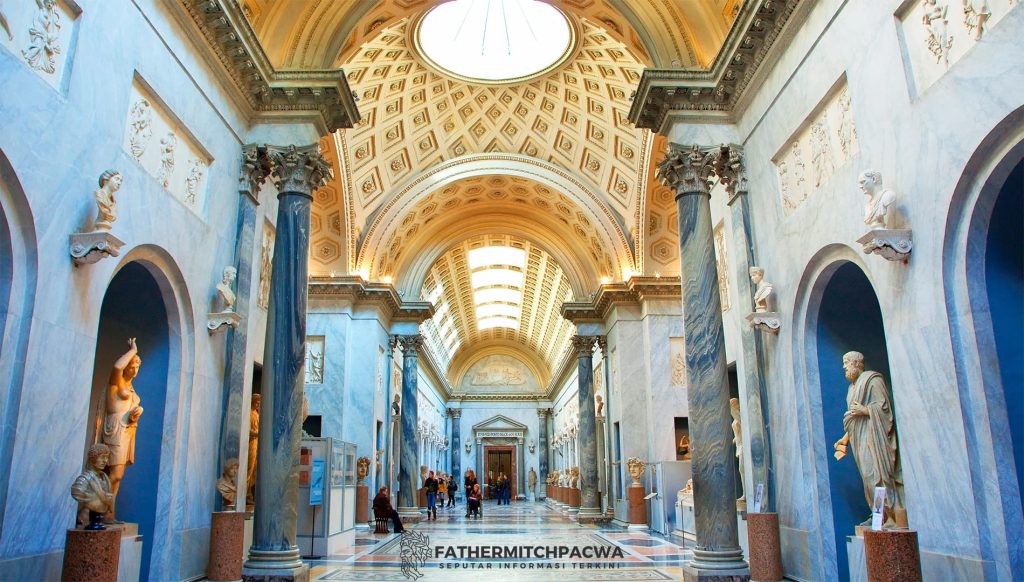Exploring the Vatican Museums: A Treasure Trove of Art and History

The Vatican Museums stand as a testament to the rich tapestry of art and history that has defined not just the Catholic Church, but the world at large. Nestled within the heart of Vatican City, the museums attract millions of visitors each year, drawn by the promise of witnessing some of humanity’s most sublime artistic achievements. From the awe-inspiring Sistine Chapel to the intricately decorated Raphael Rooms, the Vatican Museums offer an unparalleled journey through the corridors of history.
A Journey Through the Ages
The Vatican Museums are a labyrinthine collection of galleries, each echoing the footsteps of the past. Established by Pope Julius II in the early 16th century, the museums are home to a staggering array of artifacts, spanning from the classical sculptures of ancient Greece and Rome to the pioneering works of Renaissance masters.
The Sistine Chapel: Michelangelo’s Masterpiece
No trip to the Vatican Museums is complete without visiting the Sistine Chapel. The chapel’s ceiling, painted by Michelangelo between 1508 and 1512, features the iconic ‘Creation of Adam,’ a fresco that has become synonymous with the zenith of Renaissance art. The Last Judgment, another of Michelangelo’s masterworks, adorns the altar wall and offers a vivid portrayal of biblical prophecy.
The Raphael Rooms: A Fusion of Art and Philosophy
Another highlight of the Vatican Museums is the suite of reception rooms known as the Raphael Rooms. Painted by Raphael and his students, these rooms are replete with frescoes that beautifully blend artistic skill with philosophical depth. The ‘School of Athens’ is particularly notable, showcasing a gathering of the great philosophers under a grandiose architectural vista.
Egyptian and Etruscan Artifacts
Beyond the Renaissance, the Vatican Museums also offer a deep dive into ancient civilizations. The Gregorian Egyptian Museum and the Etruscan Museum house collections that are crucial in understanding the cultural exchanges between ancient societies. Here, visitors can marvel at mummies, sarcophagi, and a wealth of Etruscan bronzes.
Plan Your Visit
To fully appreciate the Vatican Museums, planning is key. Visitors should allocate several hours to explore the museums’ extensive collections. Guided tours can enrich the experience, offering insights into the art, architecture, and history of this unique cultural haven.
The Vatican Museums are more than a destination; they are a pilgrimage for art lovers, historians, and those seeking connection with the continuum of human expression. In every corner, history whispers, and beauty speaks. Whether it’s your first visit or your fiftieth, the museums offer endless discoveries, ensuring that each journey through their halls is as enriching as it is unforgettable.
Navigating the Galleries: Tips for a Seamless Experience
Visiting the Vatican Museums can be a once-in-a-lifetime experience, but it can also be overwhelming due to its vastness and the sheer volume of visitors it receives daily. To navigate the galleries with ease, it’s vital to have a game plan. Here are some tips to ensure a seamless museum experience.
Arrive Early or Late
Timing your visit can greatly impact your experience. The museums are usually less crowded early in the morning or late in the afternoon. By timing your visit accordingly, you might enjoy a more peaceful view of the masterpieces.
Dress Appropriately
Remember that the Vatican Museums are part of the Holy See, and appropriate attire is required. This means shoulders and knees should be covered.
Follow the Map
The Vatican Museums provide visitors with a map upon entry. Use this valuable resource to plot your course through the galleries, ensuring you see your highest priority pieces and exhibitions.
Consider Audio Guides or Private Tours
For a more in-depth understanding of the artifacts you’re admiring, consider renting an audio guide or booking a private tour. This can provide context to what might otherwise be an overwhelming array of art and artifacts.
Take Breaks
With so much to see, it’s essential to pace yourself. There are several spots within the museums where you can sit and rest. Taking breaks will allow you to absorb what you’ve seen and gather energy for the next set of exhibits.
Capture Memories, Respectfully
Photography is allowed in most parts of the Vatican Museums, but flash photography is not, as it can damage the artworks. Always check the signs, and when in doubt, ask a museum attendant.
Special Exhibitions and Events
The Vatican Museums often host special exhibitions, lectures, and events that delve deeper into specific aspects of art and history. Keep an eye on the museum’s event calendar to incorporate these unique experiences into your visit.
Conclusion
With the right preparation and mindset, your visit to the Vatican Museums can be as enlightening as it is enjoyable. Take advantage of the wealth of knowledge and beauty housed within its walls, and let the experience enrich your appreciation for the artistic and historical wonders of the world.







